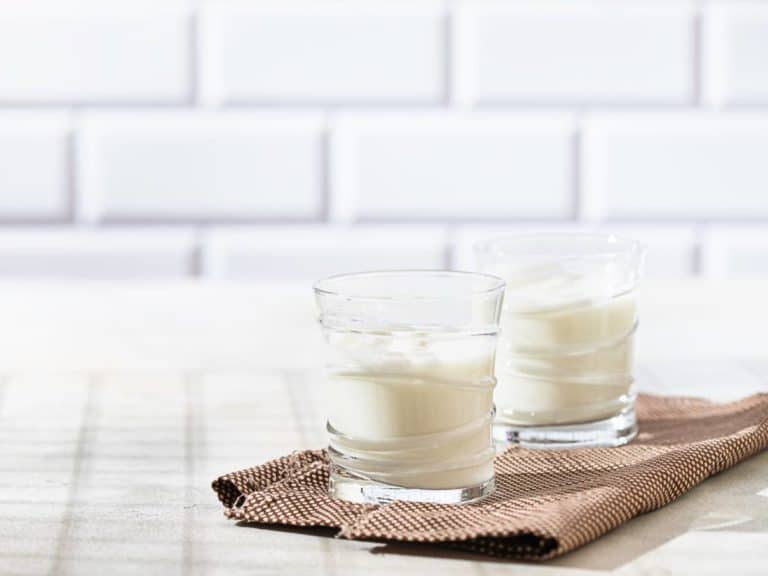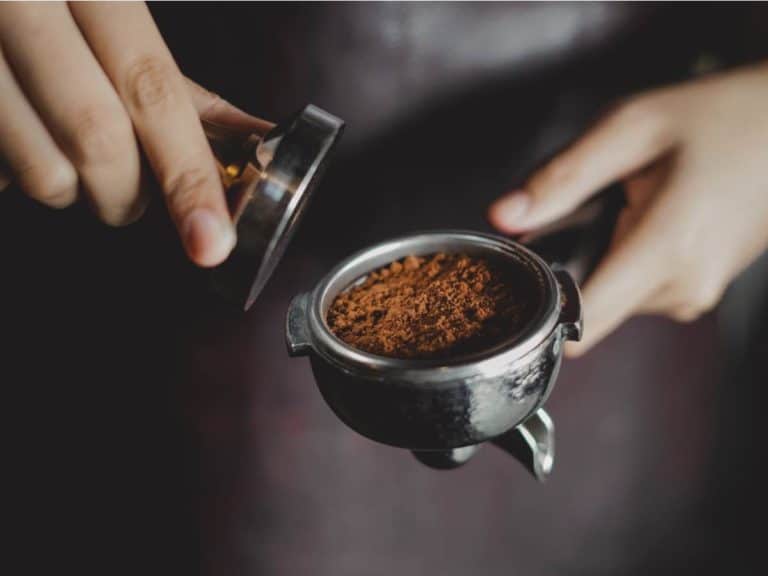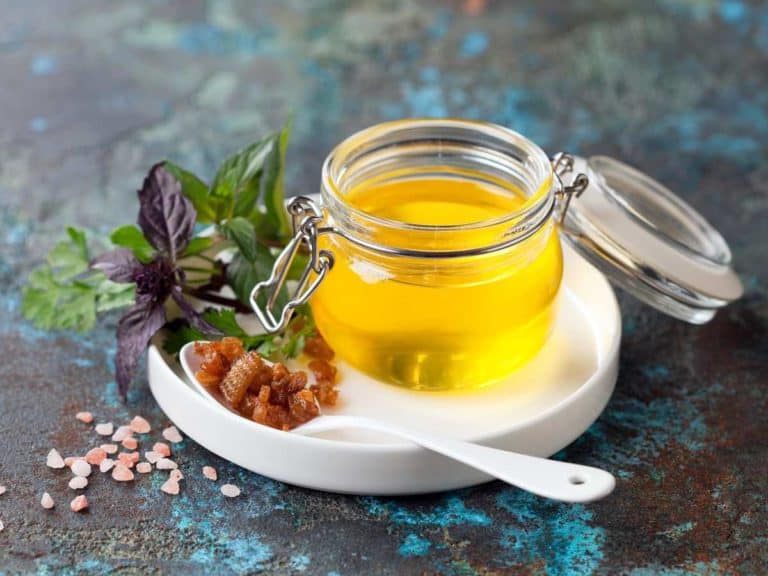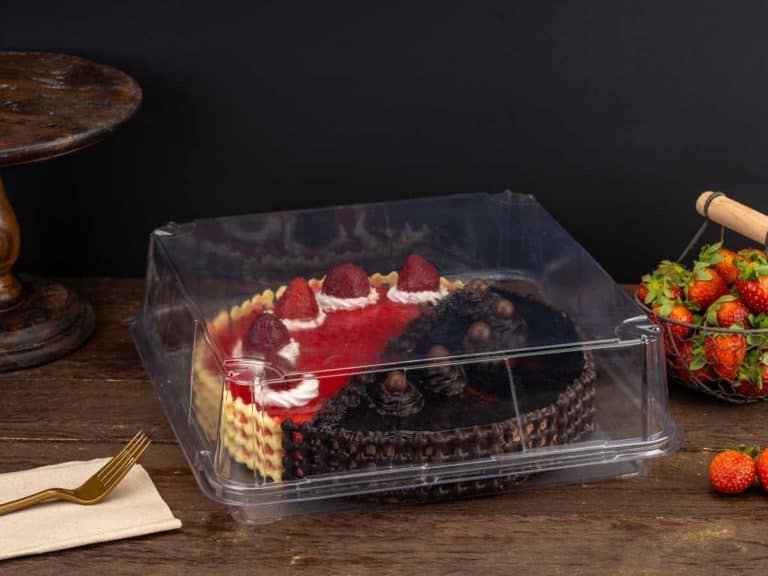Can You Put Cold Glass In The Oven: Simple Guide
Whenever we use the oven, we always preheat it to the baking temperature. Doing this lets your dish reach the baking temperature faster. But what if your dish is cold, especially if your dish is glass? Can you put cold glass in the oven?
You can put cold glass in the oven, but there are precautions you need to make. You need to make sure that the glass is heat-resistant. You’ll also want to avoid extreme temperature differences. A sudden change in temperature might cause the glass to break.
There are other things to consider if you’re thinking of putting cold glass in the oven. There is also some glass that isn’t recommended to be put in a very hot oven.
Also, have you thought of what you can do if your glass breaks while inside the oven?
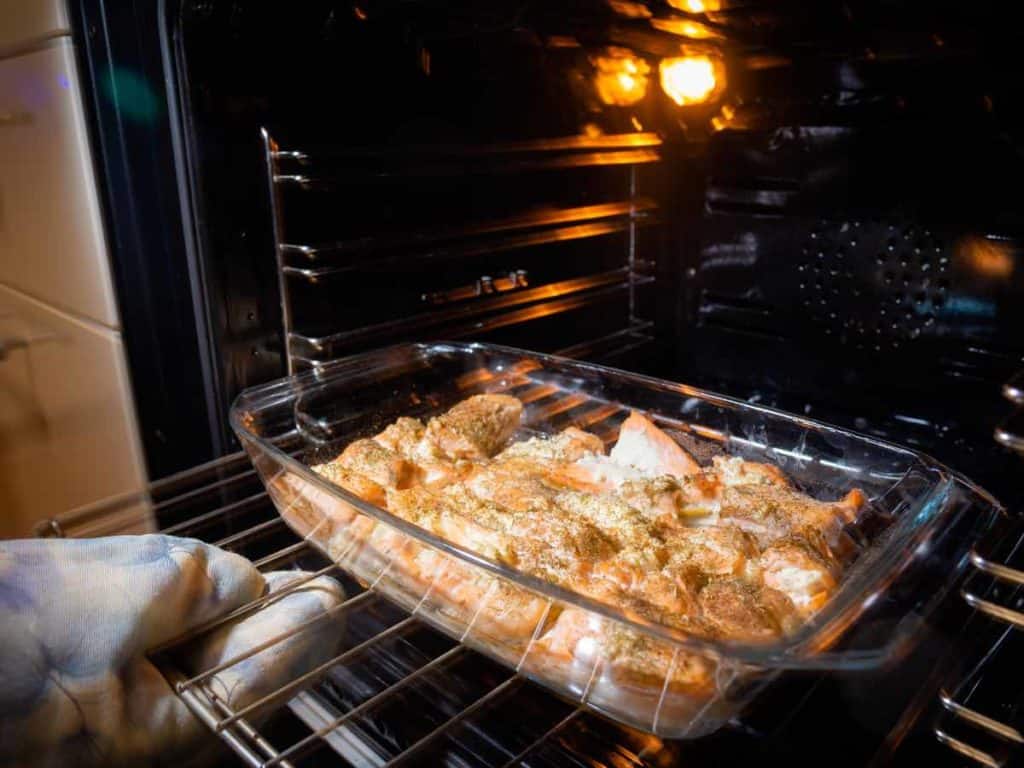
Keep reading to know more.
What Happens To Glass When Heated
The first thing that happens to glass when heated is it gets hot. Heat it further, and you start affecting its structure. At higher temperatures, glass becomes flexible. Heat it more, and the glass melts. The most glass melts between 1,300 °F (~700 °C) and 1,600 °F (870 °C).
As it cools, it can be molded into different shapes. This concept is what glassblowers use to shape glass.
Why Glass Breaks Under Heat
Have you poured freshly boiled water in a glass cup and the glass cup breaks? Water boils at 212 °F (100 °C), much lower than 1,300 °F. Baking temperatures in a home oven go between 300 °F (150 °C) and 500 °F (260 °C). But sometimes a glass dish can crack inside the oven.
So if glass melts at more than 1,300 °F, why does it break at these “lower” hot temperatures?
The reason is that glass breaks because of uneven heating.
Conductivity
Here’s some chemistry talk (Don’t worry; it’s easy to understand).
Glass is a poor conductor of heat. That means the glass is a material through which heat has a hard time traveling. It can still heat up, but you have to do it gently because the heat doesn’t spread all throughout quickly.
If you heat an area on the glass, that area gets hot fast, but the rest of the glass has lower temperatures. Glass is unlike metals like steel, which is a great conductor of heat.
You can heat up a small area on your steel pan and in a few seconds, the whole pan is hot. Poor conductivity is the main reason glass heats unevenly. And this uneven heating causes the glass to break.
Expansion and Contraction
A little bit more chemistry (Don’t worry. It’s almost done).
When materials are heated they expand. They expand because the molecules get filled with energy from the heat. Hence, they start moving around. When the material is cooled, it contracts. Cooling removes the energy from the molecules. Hence, they tend to relax and snuggle closer together.
Because glass is a poor conductor of heat, if you heat a part of it, that part heats up quickly. The rest of the glass remains relatively cool. That also means the heated part expands quickly. Meanwhile, the rest of the glass remains contracted. Expansion and contraction are opposing forces.
When the difference between the two is high enough, the affected area gives in and breaks. The higher the temperature difference, the stronger the opposing expansion and contract. The stronger the opposing forces, the higher the chance of breaking.
The stress put by the two opposing forces is called “thermal shock”.
Heat-Resistant Glass
Thanks to science, though, some glass can be made to withstand the thermal shock. This form of glass can withstand beyond 1,000 °F (~530 °C). Heat-resistant glass may be made of the same materials as regular glass. But how these materials are processed is different.
An example is a tempered glass.
Other kinds of heat-resistant glass have other stuff added to them. These extra materials make the glass tougher against heat. Borosilicate glass is a type of glass that has a material called boron trioxide. Adding boron trioxide helps make the glass heat-resistant.
There are different brands that offer heat-resistant glass for cooking. Examples are Pyrex®, Pyroceram®, and Corelle®. Bear in mind though that these glasses can still break from the heat. It just takes a lot more heat to break them.
Things To Do Before Putting Cold Glass In Oven
Check If Your Glass Is Oven-Safe
The first thing you should do is to check if your glass is oven-safe. Oven-safe glass is heat-resistant. If your glass brand is Pyrex®, Pyroceram®, or Corelle®, then they are likely oven-safe.
If not, or if you just want to make sure, look for the oven-safe symbol. Unfortunately, there isn’t a standard symbol for “oven-safe”. So the symbol might look slightly different on different brands of glass. In general, it would have a small drawing of an oven. The words “oven-safe” would also be printed below it.
Don’t Use Too High Temperatures
If your goal is to heat your food in the oven, you can safely do that by using the reasonably lowest hot temperature. In this way, you keep the thermal shock your glass dish experiences to a minimum.
Let It Warm Up A Bit
The goal is to keep the thermal shock minimal so you lower the chance of breaking the glass. Besides using a lower temperature in your oven, you can also warm up your dish.
Don’t just set it outside on the countertop. Put it on a larger dish or a basin with water. Try to get your dish as close to room temperature as possible. If you’re on a tight schedule, do this step beforehand because letting your dish warm-up can take some time.
Don’t Preheat
If your glass or dish is fresh out of the fridge, then it might not be a good idea to put it in a preheated oven. Put it in while the oven is still cold or off, then turn the oven on to your desired temperature. In this way, your dish gradually heats up with the oven. This method lowers the thermal shock the glass can experience.
Check For Cracks and Scratches
You’ll want to do this especially if your dish is old. Pre-existing small cracks weaken your dish. It might not be able to withstand more drastic thermal shocks. If there are cracks or scratches, it may be best to transfer the food to another oven-safe dish.
Check for cracks and scratches before AND after putting the glass in the oven. Doing it again after removing it from the oven ensures safety for you and anyone who will eat the food. If you find a new crack on your dish after removing it from the oven, make sure no pieces broke off and entered the food.
What To Do If Glass Breaks In The Oven
Let’s say you tried to do everything right. After some time, you look into your oven. Unfortunately, luck wasn’t on your side. Your glass dish breaks inside the oven. Your food spilled and there are glass pieces all over. Below are the things you can do.
Turn Off Your Oven
There’s no point in letting it heat, so turn off your oven. Let it cool down before you start cleaning, but don’t let it get cold. Wait until the temperature is just bearable. There will be bits and stains of food on the oven floor or walls. Those are easier to clean if they’re a bit warm.
Protect Yourself
You’ll handle spilled hot food and glass pieces. So wear mitts or gloves to protect yourself from getting burned or cut.
Pick Up The Pieces
If your dish was made with heat-resistant glass, then the pieces shouldn’t be too big or sharp. Strengthened glass-like heat-resistant glass breaks differently from regular glass.
Strengthened glass shatters into several tiny cube-like pieces. These pieces are relatively dull compared to, say, a broken beer bottle. Still, it pays to be safe. Remain cautious about cutting yourself.
You can shovel the pieces using a large spoon. You can also use a brush.
Have a dustpan, bowl, or any container in which to put the food and glass. While the oven is still warm, you can scrape off pieces of food on the oven floor or walls. You can use a spatula or a spoon for scraping.
Don’t Salvage Your Food
It is not recommended to try to salvage your food by separating it from the glass pieces. You might miss some glass pieces. Those are safety hazards that can harm your mouth or your digestive system. It is safer to discard everything.
Removing Stains From Your Oven
No one likes cleaning their oven. But it is easier to clean it if there isn’t much to clean. The oven might have cooled before you can remove all the stains. If so, you can still clean it using stuff you might already have in your kitchen.
First, you will need baking soda and water. Mix them enough so that you get a paste that has a consistency like a pancake batter. About 1/2 cup baking soda per 3 tbsp water should do it. Smear this paste on the dirty parts, but avoid the heating elements.
Let the baking soda paste sit for 15 to 20 minutes. During that time, the dirt and grease will loosen.
After waiting, prepare a diluted vinegar mixture. Use around a 3:1 mixture of water and vinegar. Wet a cloth or paper towels with this mixture, and wipe off the paste and loosened dirt. Repeat if necessary.
If you need a stronger baking soda paste. Mix in coarse salt. The texture should be like sandy paste or like the consistency of cake icing.
Make Sure You Didn’t Miss Any Glass
Those tiny glass pieces can be hard to spot. When you’ve removed all the dirt and bits that you can, check if you’ve missed any tiny pieces. Shine a flashlight in your oven. Any remaining tiny pieces of glass can reflect the light. You can also use a vacuum. But make sure your vacuum can handle tiny glass pieces.
How To Dispose Broken Glass
You can’t just throw the glass away with the regular trash. Those are hazardous to anyone handling the trash. Wrap as much pieces of glass pieces as you can with a few layers of old paper. Make sure the layers are thick enough to contain the pieces. Put the wrapped glass pieces in another bag.
Label it as “broken glass” for added precaution. Only then should you discard it with the rest of your trash.
Can You Put Mason Jars In The Oven
Glass jars like Mason jars have been used for home canning for decades. So you might think that you can put them in the oven. Unfortunately, putting Mason jars in the oven is not a good idea.
In fact, you shouldn’t be cooking with Mason jars at all, let alone baking. You can use them for canning. But that’s about the closest thing you can do with a Mason jar when it comes to cooking. Glass jars like Mason jars are meant for storage, not cooking.
Below are the reasons you shouldn’t put Mason jars in the oven.
Mason Jars Are Not Heat-Resistant
Glass jars like Mason jars aren’t made with heat-resistant glass. When you use these jars to can, you’re likely doing it as high as 212 °F. If you’re using a pressure canner, you might go up to 250 °F (121 °C). But baking temperatures are much hotter, usually at least 300 °F.
The glass of Mason jars can still handle canning temperatures. But it can’t handle baking temperatures. The glass is more susceptible to thermal shock and can break
They Make Large Sharp Shards When They Break
Glass jars like Mason jars are made with a regular glass called annealed glass. When this kind of glass breaks, it creates large sharp shards. Imagine the shards you make when you break a beer bottle. Hence, this type of glass is more dangerous when it breaks
The Only Time You Can Put Mason Jars In The Oven
There is, however, one time when you can put glass jars like Mason jars in the oven. That time is to sterilize them. Sterilizing your jars is a step you do before canning.
After cleaning the jars and lids with soap and water, you can put them in a preheated oven to dry and sterilize them. You only set the temperature between 275 °F (135 °C) and 356 °F (180 °C) and do it for 15 to 20 minutes.
Can You Use Mason Jars for Hot Drinks?
You can still use Mason jars for hot drinks. People usually drink hot beverages when the temperature is down to 140 °F (60 °C). Glass jars can handle this temperature.
Can You Put Boiling Water in Mason Jars?
It is best if you let the water cool down for a bit. Nevertheless, you can put boiling water in a glass jar like a Mason jar. There are some things you can do so that you don’t give the jar thermal shock and break it when you pour the boiling water.
Insulate the Bottom Of The Jar
Insulators are poor conductors of heat. If the jar is on a countertop, put it on an insulator, like a towel, potholder, or a silicon mat, before pouring. If you don’t do this, the countertop will rapidly absorb the heat from the jar’s bottom. As a consequence the outer side of the bottom will be cooler than the inner side, causing thermal shock.
Preheat The Jar
By preheating the jar, you reduce the temperature difference it can experience. Put it on a warm water bath. You can also pour warm water into it, then remove the warm water when you will pour the boiling water.
Pour Slowly
The more slowly you pour the boiling water, the less thermal shock the jar can experience.
Hopefully, the things you read here will save you from breaking glassware because of heat.
Read Next: What Can You Store in Mason Jars
